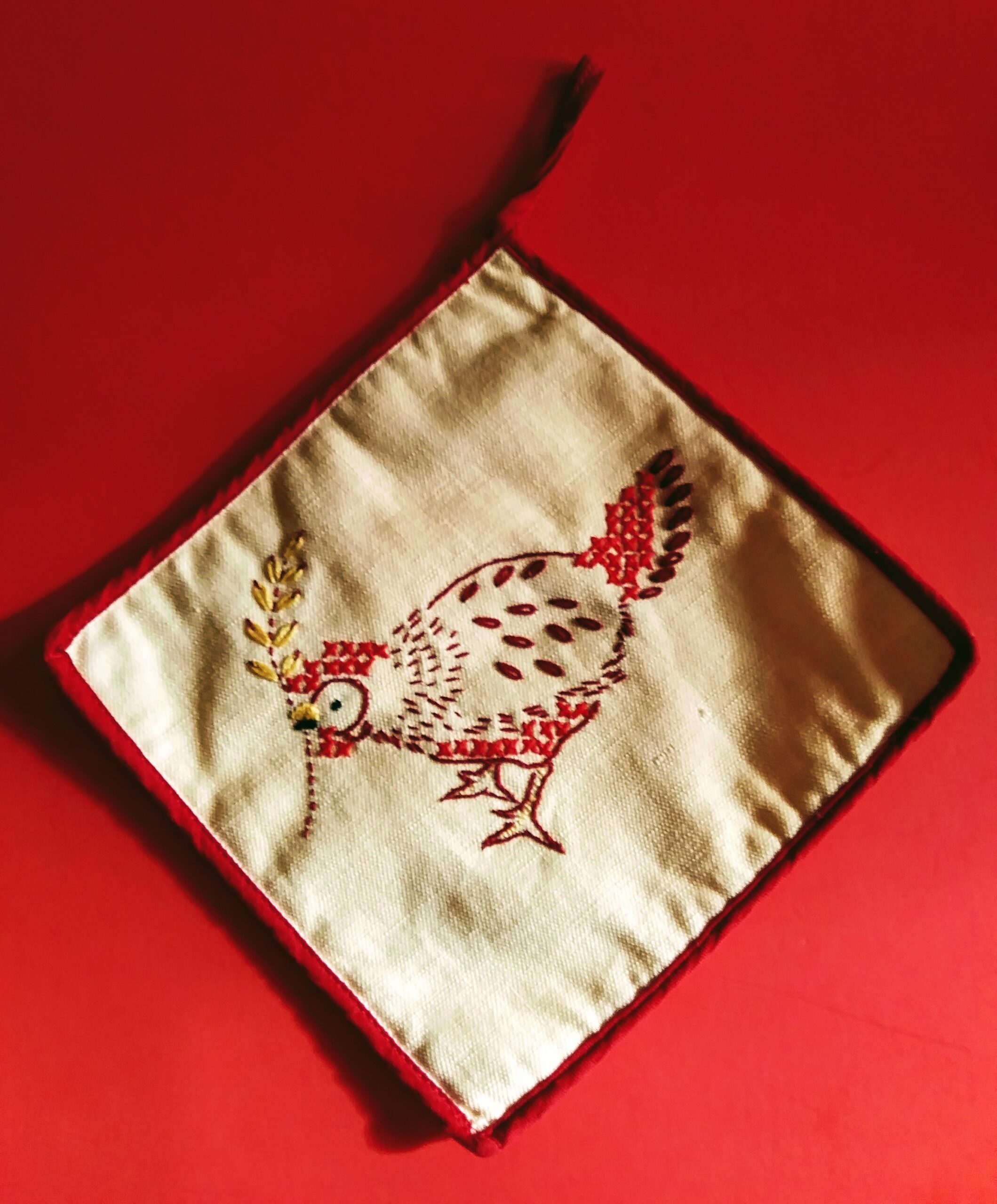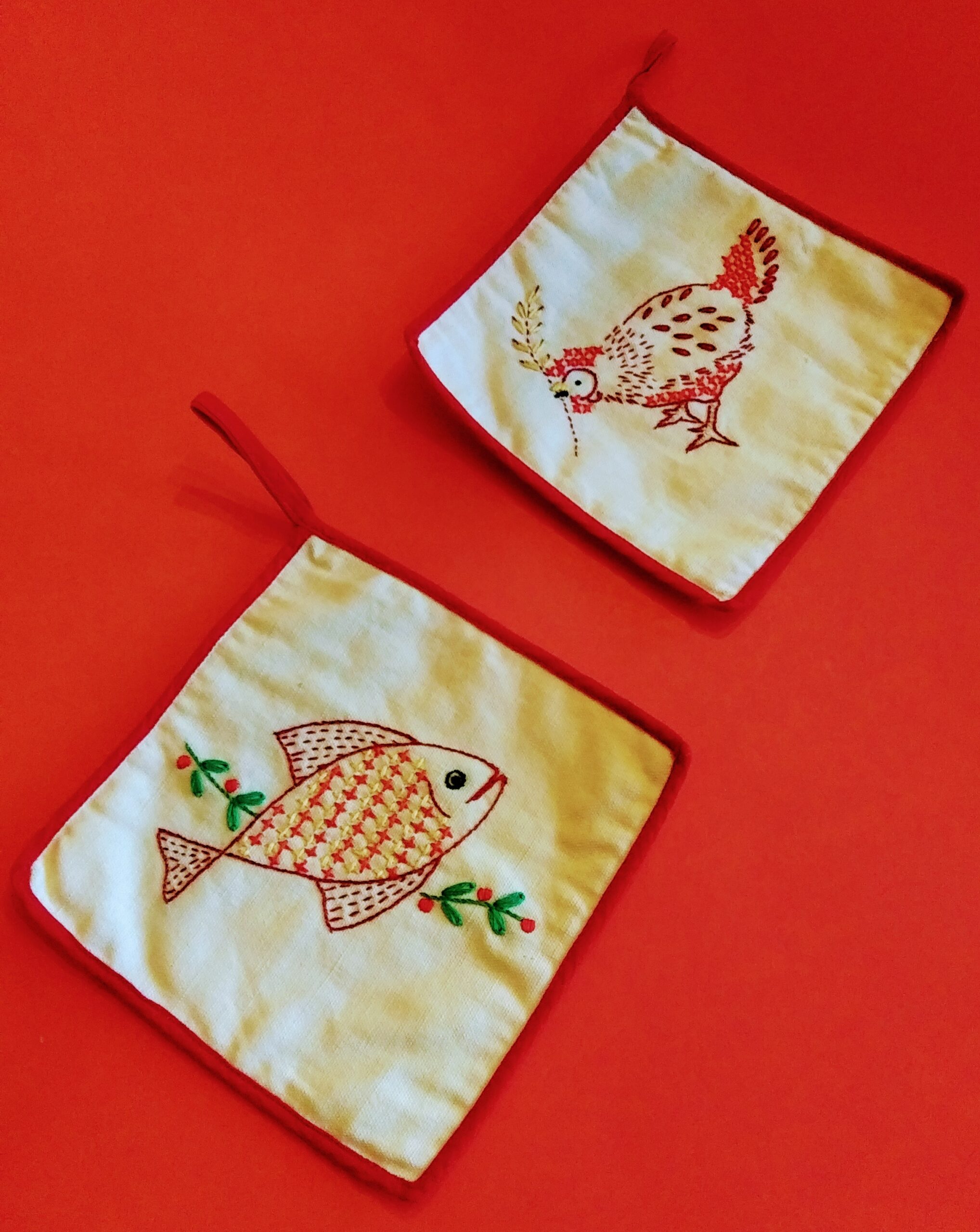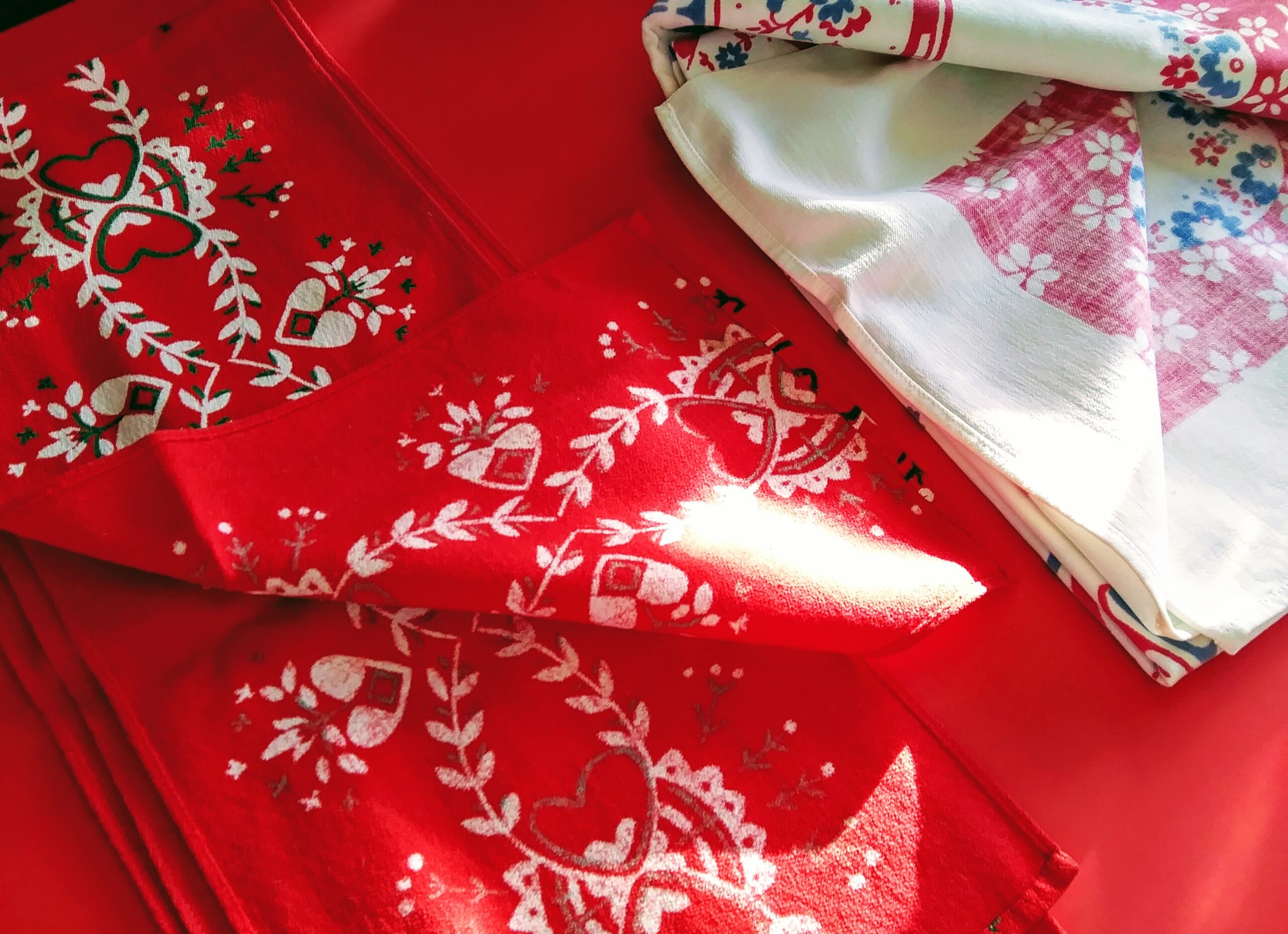I purchased these two embroidered pot holders from a second hand store. They definitely have the vintage look but this is what I call “fake vintage”.
With my first look, the pot holders are nicely hand embroidered. You can tell by the small uneven stitches.
If you see uniform stitches, you know the embroidered piece was mass produced. Also, check for tags and lot numbers on fabric since those would indicate a newer fabric.
Upon closer inspection, the fabric of both pot holders does not have the heft of vintage fabric. These pot holders are also too perfect looking as they show no signs of wear or stains.
To my eyes, the slightly brown vintage look of the pot holders is due to using a tea dye bath and not due to age.
 Close Up of Chicken Design Pot Holder
Close Up of Chicken Design Pot Holder
 Fake Vintage Tea Dyed Pot Holders
Fake Vintage Tea Dyed Pot Holders
The below photograph of the bright green tea pot pattern on these table napkins is a little tricky. The bright green tea pot design certainly looks like a vintage print.
In the 1940’s and 1950’s tablecloths, aprons and bulk material were usually printed using a screen printing technique. Most items printed this way were made of cotton or linen.
Patterns during the 1940’s and 1950’s were bright floral shapes, travel scenes, and popular food images. A screen printing is easy to spot since it is only printed on one side.
In looking at the back of these napkins, that is definitely not the case. The fabric is also too thin to be vintage. The “front” side is also not screen printed. The fabric actually looks like a blend and not made of cotton or linen.
Another tip to spot vintage material off a bolt is to check how wide it is. If it is around 35 inches wide, then it will likely be vintage material.
Green Teapot Napkins are not made with vintage material.
 Table Napkins with Vintage Pattern
Table Napkins with Vintage Pattern
The below photograph shows a genuine vintage red table runner and a tablecloth. They are probably both from the 1940’s to the 1950’s era using screen printing techniques.
If you look at the back of the fabric, the front is definitely brighter looking than the back. There is only one “right” side to the fabric.
The red table runner also is neatly hand stitched to finish the ends.
 Vintage Fabrics from the 1940’s to 1950’s
Vintage Fabrics from the 1940’s to 1950’s
The vintage tablecloth, in particular is very faded and shows signs of use.
This below photograph shows a vintage tea towel with a green pattern.
The material in this tea towel is heavy feeling linen and looks very worn in areas.
There are also some imperfections of slight snags and marks in the fabric showing use.
 Vintage Tea Towel
Vintage Tea Towel
It takes a little time to educate yourself on what vintage fabric and prints look and feel like.
But before long, you will be able to tell the difference.


W.,
I’m glad you are enjoying our blog postings. I take most of the photographs with my blog, so they are all original. My material is also original. I hope that answers your questions Take care and stay healthy.
FARMHOUSE MAGIC BLOG.COM